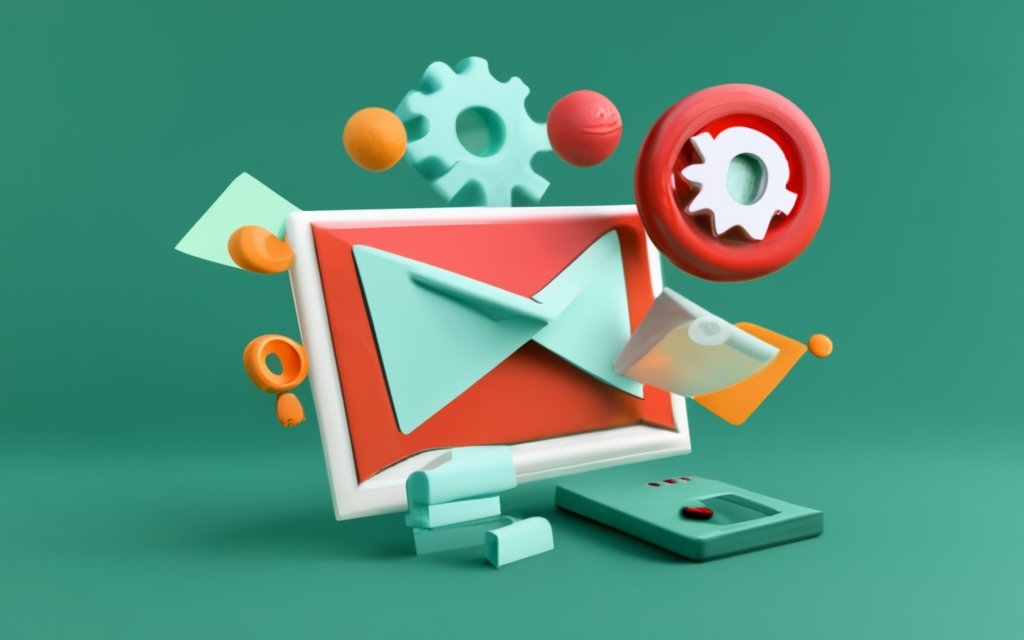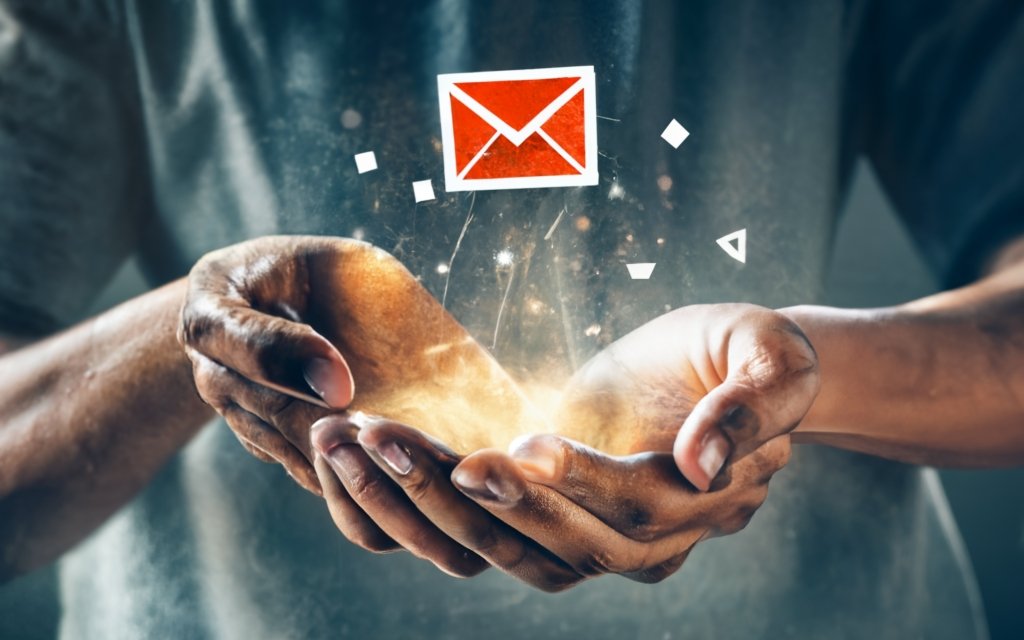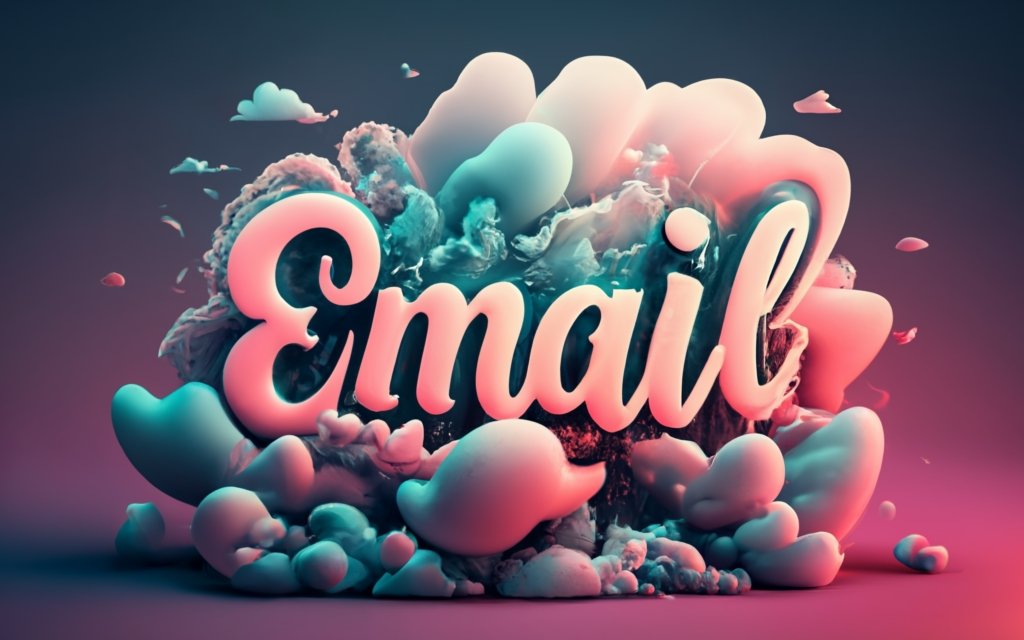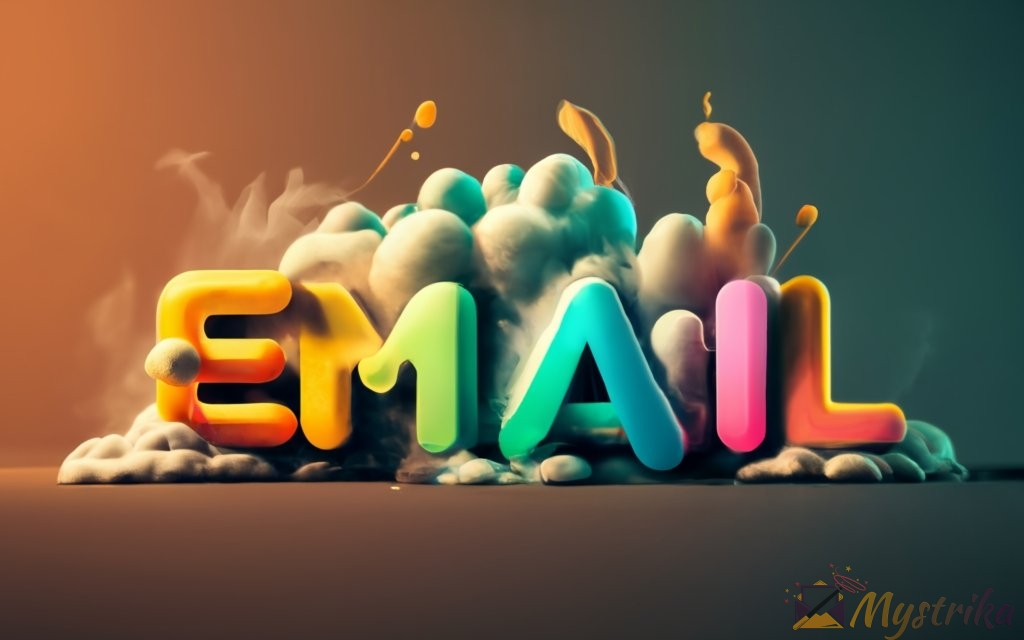Generic blast emails are a surefire way to get sent to the trash bin. To cut through the noise and captivate customers, you need personalized messaging that speaks to each subscriber’s unique needs.
This guide will explore indispensable email personalization strategies, segmentation tips, top tools, real brand examples, and mistakes to avoid. Follow along to learn the secrets to sending tailored emails that resonate at scale.
Why Email Personalization Matters
In today’s crowded digital landscape, personalized marketing is no longer just a nice bonus—it’s an absolute necessity. Generic blast emails and one-size-fits-all campaigns simply won’t cut it anymore.
When it comes to email marketing, personalization is a must. Why? Let’s count the ways.
Personalized Emails Have Higher Open and Click Rates
Sure, seeing your own name in an email subject line makes you more likely to open it. But personalized emails don’t just stop at basic name insertion.
Segmented emails targeted to specific user attributes result in:
- 26% higher open rates – Emails with personalized subject lines have a 26% higher open rate than generic titles.
- 100% higher CTR – Transactional emails customized for the recipient have 100% higher click-through rates.
- 20% more revenue – Segmented and personalized emails bring in 20% more revenue than basic batch-and-blast messages.
The more tailored the content is to the recipient, the more likely they are to open, click, read, and take action on your emails.
Personalized Emails Build Stronger Relationships
Imagine you walk into a store and the salesperson greets you by name, pulls up your purchase history, and makes recommendations based on your past buys. You’d probably appreciate the personalized service right?
It’s the same idea with email marketing. When you reference past interactions and show subscribers you understand their needs, you strengthen that relationship.
- 68% of consumers say a personalized shopping experience makes them more likely to buy from a brand again.
- Over 80% of people say they are more likely to do business with a company if it offers a personalized experience.
Personalized email helps you connect with subscribers as individuals, not faceless email addresses. Thisbuilds loyalty and trust.
Personalization Reduces Your Unsubscribe Rate
Generic batch-and-blast emails are a surefire way to get subscribers tapping that unsubscribe button.
But when you send tailored content matched to each subscriber’s preferences and interests, you reduce the chance of them opting out.
- Personalized emails can decrease unsubscribe rates by up to 50%.
- Over 70% of millennials say irrelevant content is their biggest frustration with email marketing.
Give your subscribers content they want and they’ll stick around longer. It’s that simple. Segmentation and personalization ensure you send the right emails to the right people.
Personalized Emails Set Your Brand Apart
In the average inbox, most emails look the same—generic batch sends from faceless brands. They blur together and are easily overlooked.
Personalized messaging makes your brand stand out from the sea of unsubscribe fodder. When you reference customers by name, location, purchase history, or other data points, you indicate that you see them as individuals. This makes your emails more memorable and impactful.
- 83% of consumers say personalized shopping experiences make them more likely to purchase from a brand.
- Over 90% of marketers say personalization has boosted key metrics like revenue and conversions.
If you want to separate yourself from the pack, personalized email marketing is the way to go. Use segmentation and customization make your communications delightful, unexpected, and highly relevant.
So in summary—to boost open rates, strengthen engagement, reduce opt-outs, and set yourself apart, you absolutely need to prioritize personalized email marketing. The data speaks for itself.
Don’t keep sending those stale batch-and-blast messages. Use the personalized email strategies and tools covered later in this guide to start delighting your subscribers and seeing better campaign performance.

Collecting Data for Personalization
Personalized email starts with the data. To send tailored, relevant messaging, you need to gather information about your subscribers first.
There are a few main types of data you can collect to fuel your email personalization efforts:
User Attributes
User attributes include basic identifying information about each contact, such as:
- Name
- Email address
- Physical address
- Date of birth
- Gender
- Company/organization
- Job title
- Department
This data forms a basic subscriber profile that allows you to address emails by name, segment by company or job role, tailor content by age range or gender, and more.
Here are some ways to collect user attribute data:
- Signup forms – Collect info directly from subscribers via email signup, contact, or lead gen forms on your website, landing pages, etc.
- CRM integration – Sync email subscriber data from your CRM into your email marketing platform.
- Import contacts – Bulk upload contact details via CSV or API integration.
- Forms and surveys – Use forms and surveys to gather additional attribute info from subscribers.
- Customer profiles – Pull data like company, title, and department from customer accounts.
- Social media – Capture social media profile info through integrations or social signup options.
Behavioral Data
While user attributes provide the basics, behavioral data gives you a multilayered view of how each subscriber interacts with your brand.
Behavioral data tracked for email personalization includes:
- Email opens, clicks, and engagement
- Pages visited on your website
- Content downloads or form submissions
- Purchases and transactions
- Cart additions or removals
- Product reviews or ratings
- Attendance at your events
- Interactions with ads or social content
- Activity within your mobile app
You can collect behavioral data from:
- Email analytics – Your email service provider reports on subscriber email engagement.
- Website analytics – Solutions like Google Analytics track on-site behavior.
- Transactional data – Pull data on purchases, downloads, event signups, etc. from your ecommerce platform, payment processor, or other tools.
- CRM – Sync behavioral info from your CRM into your email platform.
- Custom tracking – Use scripts or tags to capture custom on-site interactions.
Preferences and Interests
Understanding subscriber preferences and interests allows you to further fine-tune personalization. Ways to gather this info include:
- Preference centers – Let subscribers choose topics, types of messages, frequency, etc.
- Surveys and polls – Ask for direct input on interests and preferences.
- Social media – Look at social media follows and engagement for clues on interests.
- Website behavior – See what content they frequent on your site.
- Purchase data – Note product categories purchased from your business.
- App usage – Track how they engage with different sections of your mobile app.
- Reading behavior – If you send a newsletter, see which articles they read.
Past Interactions and Purchases
Keep track of your subscribers’ history with your brand across channels. Reference this when personalizing your outreach.
- Email history – Document past email sends, opens, and clicks.
- Purchase history – Log all transactions and products bought.
- Service history – Record support tickets, returns, complaints.
- Event history – Track event signups and attendance.
- Web history – See past site visits and engagement.
- App usage history – Note how frequently they use your mobile app.
- Social history – Capture past social interactions with your brand.
Sources of Data to Fuel Personalization
Now that we’ve covered the main data types, where exactly can you collect all this personalized email fuel? Here are some top sources:
Website Analytics
Solutions like Google Analytics allow you to deeply track anonymous website visitors and then identify them as known contacts when possible. This gives you a detailed picture of on-site behaviors for personalization.
Surveys and Forms
Use pop-up or embedded surveys and forms to directly ask subscribers for their preferences and interests. This gives you first-party data straight from the source.
Customer Profiles
Pull data housed in your CRM, ecommerce platform, or other databases to layer on top of basic subscriber info. This gives you their full history with your brand.
Past Email Metrics
Your email service provider captures detailed open, click, and engagement data on all your email sends. Leverage this goldmine for personalization.
Transactional Data
Sync data on purchases, downloads, event signups, and other transactions from your payment processor, event software, ecommerce platform, etc.
Social Media
Collect social media handles and then leverage tools like Facebook Graph API to gather additional interests, behaviors, and attributes to inform personalization.
App Usage and Events
If you have a mobile app, utilize SDKs and app event tracking to record in-app behaviors, preferences, transactions, and more.
Leveraging different data sources allows you to build robust, 360-degree user profiles that feed your personalized email efforts. Pull together data, connect the dots across channels, and get to know your subscribers on an individual level.
Segmenting Your Audience
You’ve collected all this great data on your subscribers. Now what? Segmentation is key to actually activating that data for personalized email campaigns.
Segment by Demographics
Divide your audience into groups based on attributes like:
- Age – Create segments like 20-30, 30-40, 40-50, etc. Age impacts interests, life stage, purchasing power.
- Gender – Men and women have different communication preferences and shopping habits.
- Location – Regional dialects, local references, and time zones vary by geography.
- Job title/industry – Tailor messaging by role. CMOs care about different topics than developers.
- Company size – SMBs have different needs than enterprises.
Segment by Interests and Preferences
Group subscribers who have shown interest in or preference for:
- Specific content topics – Ex. target by interest in email marketing, sales, leadership.
- Product categories – Ex. segment by interest in security software vs marketing tools.
- Brand mission – Ex. separate eco-conscious vs budget-focused shoppers.
- Communication channel – Ex. email-only vs text message subscribers.
- Message frequency – Ex. segment by those wanting daily vs weekly updates.
Segment by Past Purchases and Behavior
Divide your list based on behaviors like:
- Past purchases/products – Ex. target buyers of Product A with upsells.
- Purchase recency/frequency – Ex. re-engage once-loyal customers who haven’t bought recently.
- Purchase value – Ex. focus on high-lifetime-value customers.
- On-site behavior – Ex. remarket to everyone who viewed certain pages.
- Email engagement – Ex. nurture subscribers with low open rates.
- Event attendance – Ex. market related events to past event attendees.
Tools to Help You Segment
Manually dividing your list into buckets can quickly become overwhelming. Leverage tools that make segmentation easy.
Mailchimp
Mailchimp offers powerful segmentation features like saved filters and groups, tagging, and AI-powered lookalike audiences.
HubSpot
HubSpot’s Smart Lists tool lets you automatically group contacts based on criteria like demographics, interests, and behaviors.
Mailmodo
Mailmodo has robust contact filtering options to dynamically segment your subscribers as you build campaigns.
Other options include ActiveCampaign, Klaviyo, and Customer.io. The right email marketing platform makes managing segmented lists a breeze.
Segment for Personalization
Dividing your contacts into distinct buckets is key to sending hyper-targeted emails. Here are a few examples of personalized emails you could send to specific segments:
- Welcome series for new subscribers
- Re-engagement campaigns for inactive contacts
- Promotions by product category interest
- Educational content by seniority
- Store location-based specials
- Age-specific birthday offers
Get granular with your segmentation to truly personalize every send. Resist the one-size-fits-all newsletter approach. Leverage your data to divide and conquer your audience for better results.

Personalization Tactics and Examples
You’ve got the data. You’ve created audience segments. Now it’s time for the fun part—actually crafting personalized emails.
There are endless creative ways to tailor your messaging. Here are some of the most effective personalization tactics and examples to inspire your campaigns.
Add First Name in Subject Line and Body
Including the subscriber’s first name makes your email stand out as personalized versus generic spam. But don’t stop there. Avoid using “Hey {First Name}” as your email copy opener. Get more creative than that.
Examples:
Subject: Hey Maria, check out these deals just for you!
Body:
Maria, I noticed you haven’t booked your annual girl’s weekend getaway yet. I pulled together some deals I think you and the ladies will love. Enjoy!
Subject: John, we miss you!
Body:
John, it’s been a while since we’ve seen you online. We have exclusive offers for returning customers like you. Come back soon!
Birthday and Anniversary Offers
Birthdays, loyalty anniversaries, and other subscriber milestones present opportunities to delight contacts with special personalized offers.
Examples:
Subject: Happy Birthday Cindy! Enjoy 20% off 🙂
Body:
Cindy, we wanted to celebrate your birthday this month with an exclusive 20% off coupon. Use code BIRTHDAY20 during checkout. Go treat yourself!
Subject: Sarah, today marks 3 years with us!
Body: Sarah, congratulations on your 3 year anniversary as a OurBrand loyalist! To celebrate you, here’s a free $20 store credit. Enjoy and thanks for your continued support!
Cart Abandonment Reminders
Remind customers of items they left in their online carts to recover lost sales opportunities. Pull abandoned cart data and send targeted reminders.
Example:
Subject: John, your cart is looking lonely!
Body: Hey John! Just following up since it looks like you didn’t complete your checkout with us. Your cart is still holding your adorable plaid scarf! Don’t miss out. Shop now to get your new winter accessory in time for the holidays.
Location-Based Content
Use geotargeting to segment your list by location. Send location-specific offers or information tailored to where recipients live/work.
Example:
Subject: Hey Maria, it’s taco time in Austin!
Body: Maria, it’s Thursday so you know what that means—half priced tacos at Taqueria del Sol! Get there by 5pm to beat the lines at their Austin location near your office. Grab your coworkers and go fuel up on their amazing fish tacos. You can thank us later 🙂
Recommendations Based on Browsing History
Create tailored product recommendations based on subscribers’ on-site browsing behavior and past purchases.
Example:
Subject: Lara, check out these sunglasses we picked for you!
Body: Remember those aviator sunglasses you were eyeing last week? We thought you’d like these similar styles! Check them out before summer ends.
Now let’s look at some mistakes to avoid when personalizing your messaging…
Personalization Mistakes to Avoid
It’s easy to go overboard with personalization. Steer clear of these common pitfalls:
Overusing First Name
A little first name goes a long way. Resist repetitively saying “Hey {First Name}” throughout your email copy. It comes across as spammy and impersonal.
Irrelevant Recommendations
Don’t suggest products randomly. Base recommendations on actual subscriber interests and behaviors. Irrelevant suggestions can disengage readers.
Creepy Over-Personalization
While personalized, some tactics make subscribers uncomfortable. For example, avoid:
- Referencing purchases they’d rather keep private
- Using their location in a way that seems like you’re tracking them
- Getting too intimate too soon in early lifecycle emails
Tread carefully to avoid coming across as creepy!
Scaling Personalization for Large Audiences
Crafting bespoke emails for every individual quickly becomes unscalable. Leverage these tactics to personalize at scale:
Dynamic Content Blocks
Build content blocks that populate dynamically for segments. For example, show dollar amounts in someone’s local currency.
AI Writing Assistants
AI tools can generate personalized email copy tailored to customers. This allows for mass personalization.
Account-Based Personalization
For B2B, personalize by target account rather than individual. Send account-specific messaging, offers, etc.
Tools to Help You Scale Personalization
Certain software makes personalizing hundreds or thousands of emails at once possible.
Lemlist
Lemlist offers granular segmentation and personalized variables you can insert in each message.
Mailshake
Mailshake has a “Personalize” button allowing you to customize emails as you scale sequences.
Persado
Persado’s AI generates emotionally intelligent, personalized copy tailored to each customer.
Mailmodo
Mailmodo offers segmentation, dynamic content blocks, and AI writing capabilities to scale personalization.
Test different tactics and tools to find the combination that works for your brand and resources. Don’t shy away from experimenting to see what resonates most with your audience.
Scaling Personalization
Crafting a few one-off personalized emails is simple enough. But as your list grows, sending individualized messages to every subscriber quickly becomes impossible.
You need tactics and tools that help you personalize at scale. Here are some top options:
Use Dynamic Content Blocks
Rather than creating a fully separate version of your email for each segment, use dynamic content blocks that populate tailored content automatically.
For example, you could create:
- A hero image that changes based on the subscriber’s location
- A price display that shows amounts in the recipient’s local currency
- A content section tailored by their industry or role
The rest of the email remains static. But dynamic blocks give the impression of a fully personalized message.
Leverage AI Writing Assistants
AI tools like __ can generate hundreds of personalized email variations for your segments.
Describe your audience segments and ideal tone. The AI will generate tailored email copy that sounds natural and resonates with each group.
This allows for large-scale personalization without you manually writing separate emails. The AI does the heavy lifting.
Take an Account-Based Approach
For B2B companies, personalize by target account rather than individual. Use data like:
- Company attributes like industry, size, tech stack
- Buying stage
- Key contacts and roles
- Recent news, expansions, or launches
Then segment your target account list and create account-specific messaging rather than trying to personalize for each individual contact.
Tools to Power Scalable Personalization
Certain software makes easy work of personalizing thousands of emails:
Mystrika
Mystrika offers granular segmentation and easy personalization like adding first name to scale outreach.
Mailshake
Mailshake has a “Personalize” button so you can tailor and customize every email as you build sequences.
Persado
Persado’s AI generates customized, emotionally-intelligent copy for every subscriber tailored to their needs.
Mailmodo
Mailmodo provides segmentation, dynamic blocks, and AI writing to easily scale highly personalized campaigns.
Test different tactics and tools to determine the best approach based on your resources and subscribers. Don’t get overwhelmed. With the right technology, sending tailored messages at scale is totally doable.

Personalizing Outreach Across Channels
Email is a key channel for personalization, but don’t stop there. Follow these tips to ensure a consistent, tailored experience when connecting across multiple touchpoints:
Use Data From Both LinkedIn and Email
Compile insights on prospects from both LinkedIn and your email campaigns. This gives a 360-degree view that you can leverage.
For example, use LinkedIn Sales Navigator to learn about their role, interests, and company. Then combine that with intelligence gathered from your email opens, clicks, web visits, etc.
Build detailed profiles using both sources of data for deeper personalization.
Connect Messaging Across Channels
The key is making sure your outreach across channels tells one cohesive story focused on the prospect’s needs.
When switching channels, reference previous conversations to jog their memory and strengthen the connection.
Examples:
LinkedIn: “Hi {First Name}, regarding that email I sent about {Topic}, I just wanted to connect on LinkedIn as well since I see you’re active here.”
Email: “I noticed you commented on my recent post about {Topic}. Wanted to continue that conversation over email and get your thoughts on…”
Without these transitional touches, your outreach may come across as disjointed and robotic. Tie everything together.
Leverage Trigger Events
Monitor channels for events indicating a change in the prospect’s needs or pain points. Then use that intel to personalize your follow-up messaging across channels.
For example, if they:
- Get promoted to a new role
- Post about hitting a revenue goal
- Share an article on scaling operational challenges
Reach back out via email or LinkedIn referencing the trigger event as context for your personalized outreach.
Scale Multi-Channel Personalization With Automation
Trying to manage personalized sequencing by hand across channels is incredibly labor-intensive.
Leverage automation tools to handle the heavy lifting.
Tools Like Mystrika
An automation platform like Mystrika allows you to build multi-channel sequences that mix personalized email and LinkedIn messaging seamlessly.
It offers features like:
- Email and LinkedIn templates with dynamic personalization
- Workflows with conditional logic
- Open, click, and reply tracking
- CRM sync
- Email deliverability tools
Workflows and Sequences
Build automated workflows that move prospects through a journey with personalized touches across channels based on their behaviors and attributes.
A/B Testing
Test different personalized messages, offers, etc. on segments to optimize the cross-channel experience.
Metrics and Analytics
Use open, click, and response tracking to gauge engagement and fine-tune your personalization approach over time.
Advanced sales automation technology enables you to coordinate smoothed, tailored outreach at scale across touchpoints. Take the manual work out of multi-channel personalization.

Best Practices For Personalized Emails
What does a stellar personalized email program look like in action? Follow these best practices as you craft tailored messaging at scale:
Constantly Test and Optimize
Don’t get stuck just sending the same segmented emails over and over. Your subscribers and their preferences change over time.
Continuously test new personalized approaches to see what resonates:
- Try different segmentation mixes
- Experiment with new data points and personalization variables
- Swap in fresh dynamic content blocks
- Send time optimization tests
- Change calls-to-action
Then pour your energy into what works. Double down on tactics that drive conversions, not just opens. The optimization process never stops.
Leverage Preference Centers
You can manually segment and craft assumptions about subscribers all day long. But why not get their preferences directly from them?
Build detailed preference centers that allow customers to specify:
- Email frequency
- Categories of messages
- Product interests
- Communication channels
This first-party data makes personalization much easier. Send subscribers only what they ask for.
Ensure Relevant Recommendations
If you’re using on-site behaviors to fuel product recommendations, take care to filter out irrelevant suggestions.
For example, exclude:
- Items already purchased
- Suggestions based on a one-time atypical purchase
- Recommendations they would get every time due to lack of recent activity
Irrelevant suggestions actually train customers to ignore your recommendations altogether. The relevance of each one is critical.
Personalize Across The Customer Lifecycle
Don’t take a one-and-done approach to personalization. Tailor messaging across the entire customer journey:
- New subscriber welcome series
- Browse abandonment and cart recovery flows
- Re-engagement campaigns for inactive users
- VIP loyalty programs for big spenders
- Win-back offers for defecting customers
- Upsell opportunities for repeat purchasers
Get granular to guide each subscriber’s experience with your brand from start to finish.
Pitfalls to Avoid
Steer clear of these common personalized email mistakes:
Irrelevant Hyper-Personalization
Getting overly personal too soon can seem intrusive if you lack a well-established relationship. Take care not to cross the line.
Ignoring Opt-Outs and Consent
Always respect subscriber preferences. If someone opts out of certain data collection or types of messages, honor those choices.
Sacrificing Brand Voice
Personalization shouldn’t completely sacrifice your brand identity. Find a balance between tailoring and maintaining voice.
Here are a few other universal personalized email best practices:
- Proofread every campaign, including dynamic segments.
- Preview different data scenarios to catch issues.
- Ensure mobile responsiveness.
- Use inclusive language suited for a diverse audience.
- Send test emails to review how final versions look.
- Check legal requirements like CAN-SPAM compliance.
- Set up unsubscribe and contact options.
In short
Here are the core pillars of a winning email personalization strategy:
- Collect extensive subscriber data across channels
- Leverage segmentation to divide your audience
- Experiment with tailored content blocks and variables
- Take an account-based approach for B2B
- Connect messaging across channels and campaigns
- Constantly optimize based on performance
With the right data, segmentation, tools, and optimization process in place, your emails will feel like individual conversations instead of bulk blasts.
Summary
Personalized email is no longer optional—it’s a must for resonating with today’s consumers. Here are the core lessons to take away:
- Prioritize personalization to boost engagement, strengthen relationships, reduce unsubscribes, and stand out from the crowd. Don’t keep sending batch-and-blast emails.
- Collect robust data on subscribers including attributes, behaviors, preferences, and history. This provides fuel for tailored messaging.
- Leverage segmentation to divide contacts based on demographics, interests, and actions. Send hyper-targeted emails to each custom segment.
- Get creative with personalization tactics like dynamic content, personalized subject lines, birthday offers, cart recovery campaigns, and more.
- Take an account-based approach for B2B to personalize by target company profiles and buying stage.
- Use tools like Mailshake, Mailmodo, Persado, and Mystrika to scale personalization across large audiences.
- Connect messaging across channels like email and LinkedIn for integrated, omnichannel personalization.
- Continuously test and optimize your approaches based on open rates, clicks, and conversions. Don’t get stagnant.
The most successful email marketers take the time to really know their subscribers and create tailored experiences. With the right personalization mindset, strategies, and tools in place, your emails will feel like individual conversations instead of generic blasts to the masses.
Here are some frequently asked questions about email personalization that could be included:
Frequently Asked Questions
What are the benefits of email personalization?
Personalized emails have higher open and click rates, strengthen customer relationships, reduce unsubscribes, and set your brand apart. Tailored messaging creates more relevance for each subscriber.
What data can you use to personalize emails?
User attributes like name, location, and purchase history, behavioral data such as website engagement, declared preferences and interests, and their history with your brand are all options.
How can you segment your list for personalization?
Divide your audience into buckets based on demographics, interests, purchase behaviors, email engagement, and more. Then target each segment with hyper-relevant messaging.
What are some examples of personalized emails?
Offering first name personalization, birthday discounts, cart abandonment reminders, tailored product recommendations, re-engagement campaigns, and location-specific content are all personalized email tactics.
What are some tools to help with personalization?
Solutions like Mailshake, Mailmodo, Persado, and Mystrika provide features to easily scale personalized email sequencing and campaigns.
How can you personalize across channels?
Use LinkedIn, web, and email data in harmony to build 360-degree prospect profiles. Then connect messaging across touchpoints using triggers.
What are some pitfalls to avoid with personalization?
Don’t damage subscriber trust with irrelevant hyper-personalization, ignore their consent and opt-outs, or sacrifice your brand voice and messaging.
How can you optimize and improve personalization over time?
Continuously A/B test new segments, content, timing, and design. Analyze performance and double down on what demonstrates the highest engagement and conversions.

